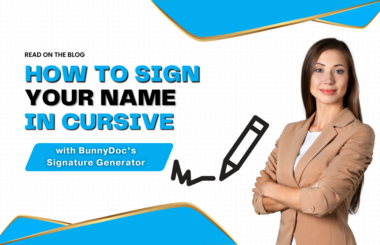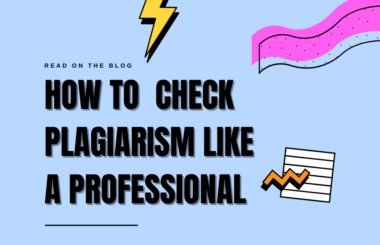Need help writing a proposal for your business? Our guide will walk you through the process step by step, from planning to writing and submitting your proposal. We’ll also provide templates and tips to help you get started.
The following things that readers are looking to obtain from your proposal
- Information about your company: Write about your background and why your company is better than your competitors
- Demonstrated knowledge of the problem: write about this
- Pricing and methodology: write about this
Before writing the business proposal, it is important to understand the client and their needs. It can be helpful to have a meeting or call with the client to understand their problem. Once you have this information, it’s time to write the business proposal.
Let’s start with the business proposal structure.
- Cover Page
- Cover Letter
- Table of contents
- Executive Summary (Here you have a chance to explain why)
- Explain the problem
- Solution of the problem (propose the solution of the problem)
- Share your skills and qualification
- Testimonials (optional)
- Pricing
- Summarize with conclusion
- Terms and conditions
- Space for signatures
Cover Page
Every business proposal needs a cover page. A cover page is a one-page summary of your business proposal, which is written upfront to impress the client and make them want to read further. It’s short and to the point, and it includes a few important details, like the business proposal’s author, the date, and the proposal’s objective. A cover page is one of the first things our clients will read, so it’s the perfect place to start with the business proposal structure.
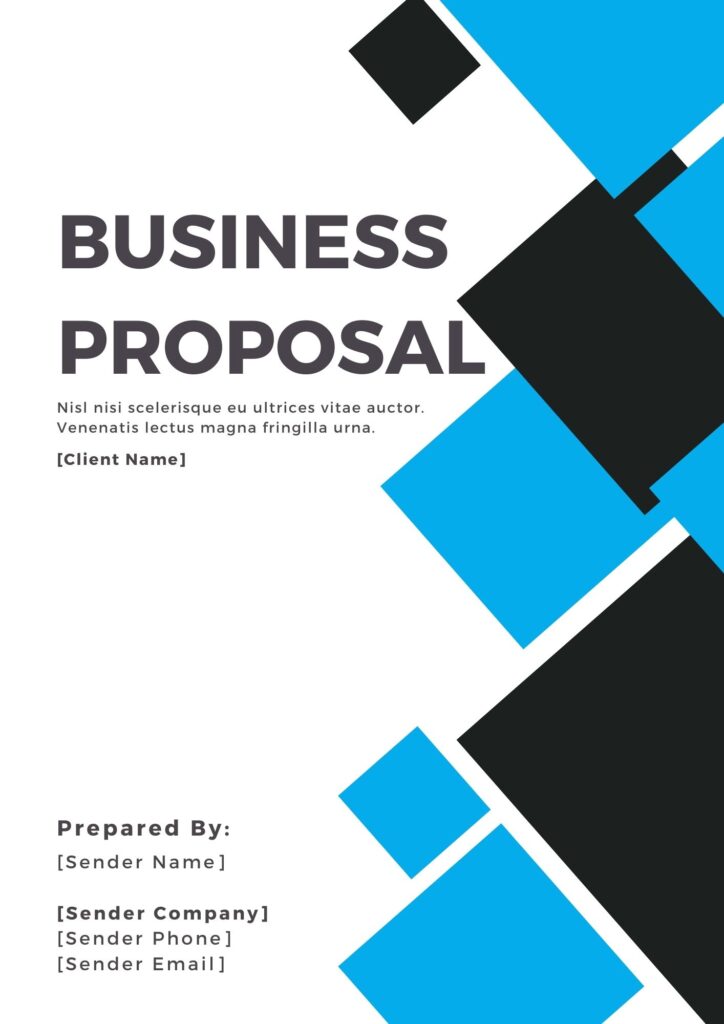
Cover Letter
A cover letter is like an introduction to your potential client. It’s a way to give them an overview of who you are, what your company does, and why you’re the best choice for the project.
Keep it friendly and encourage your reader to reach out with any questions they may have. Close with a thank you and your signature.
Your cover letter is an important aspect of your proposal. It should be concise and well-written, and it should stand out from the rest. There are many ways to make your cover letter stand out, so take some time to brainstorm what will work best for you and your proposal.
A winning proposal is engaging, informative, and visually appealing. As you’re putting together your proposal, don’t be afraid to add graphics and images to break up the text and keep readers engaged. A little bit of color goes a long way!
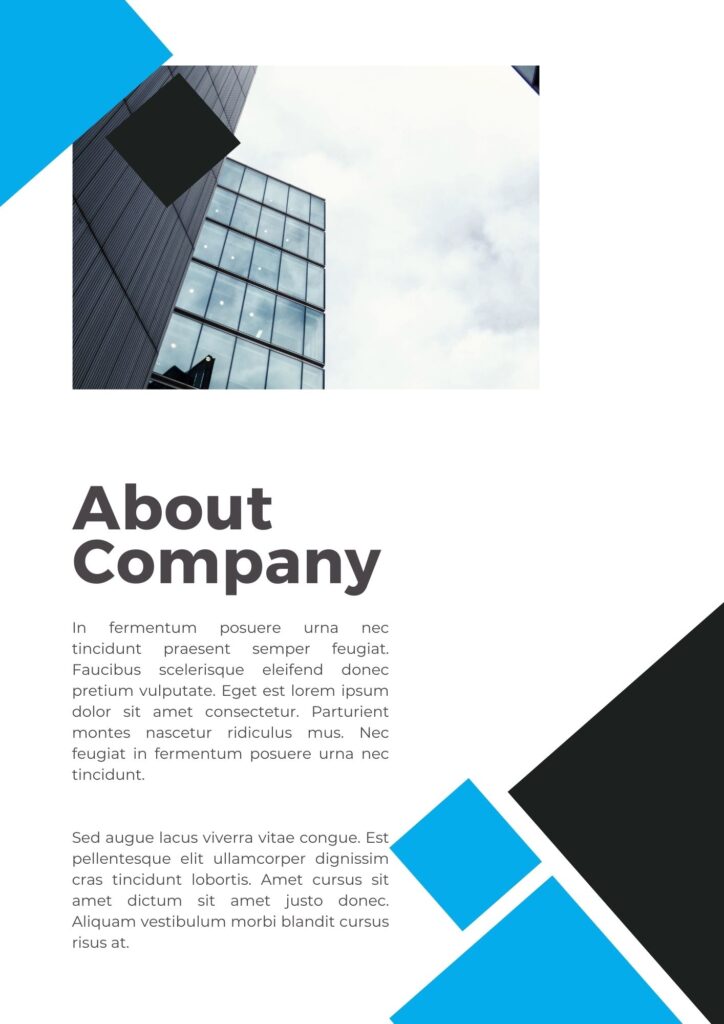
Table of contents
A table of contents is an essential part of any business proposal. It allows the reader to see at a glance what topics are covered in the proposal and helps them navigate through the document easily. Here are some tips on how to write a table of contents for your business proposal:
1. Keep it brief
Your table of contents should be concise and to the point. It should only list the main sections and subsections of your proposal.
2. Use clear and descriptive headings
Use headings and subheadings that accurately describe the content of each section. This will make it easier for the reader to find the information they are looking for.
3. Use consistent formatting
When formatting your table of contents, use consistent font size, style, and layout. This will make the document easier to read and will give it a professional appearance.
4. Include page numbers
Make sure to include page numbers for each section so the reader can easily find the information they need.
5. Update the table of contents as needed
As you add or delete sections from your proposal, be sure to update the table of contents accordingly. This will ensure that it always accurately reflects the current contents of the document.
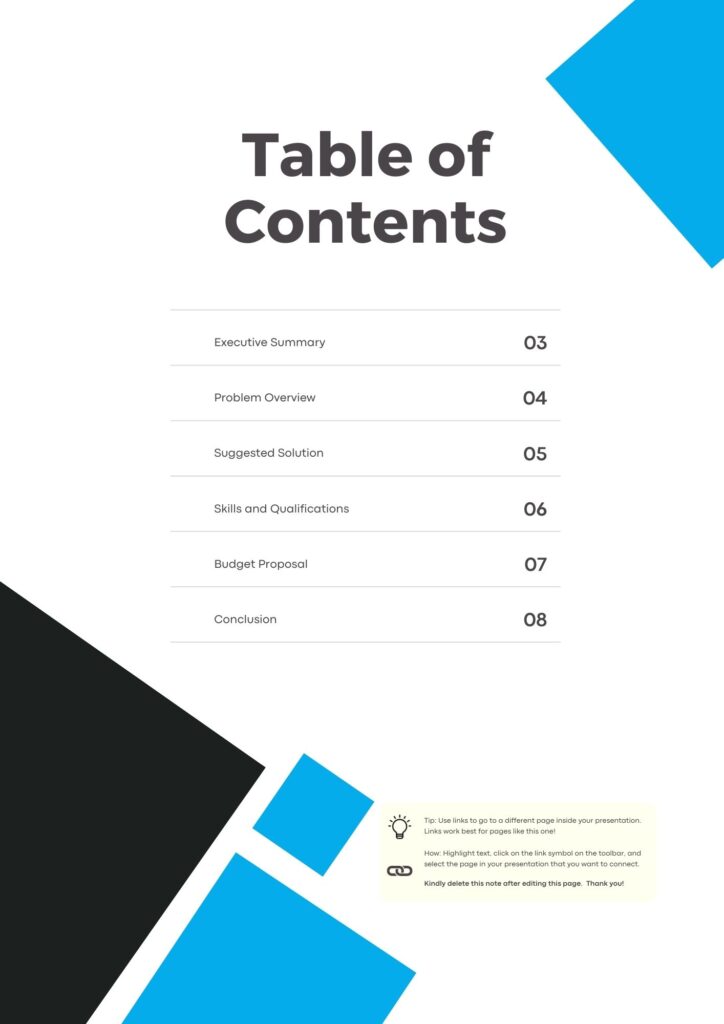
Executive Summary
An executive summary is a brief, yet thorough, an overview of a business proposal. Its purpose is to provide a quick snapshot of the main points of the proposal, without getting bogged down in the details. As such, it should be clear, concise, and free of any unnecessary fluff. Here are a few tips on how to write an executive summary for a business proposal:
- Start by introducing the company or organization.
- Give a brief overview of the problem or opportunity that the proposal is addressing.
- Outline the main points of the proposal.
- Keep it short and to the point.
- Use simple, easy-to-understand language.
- Make sure the executive summary is error-free.
- Avoid adding any new information in the executive summary.
- End with a call to action or next steps
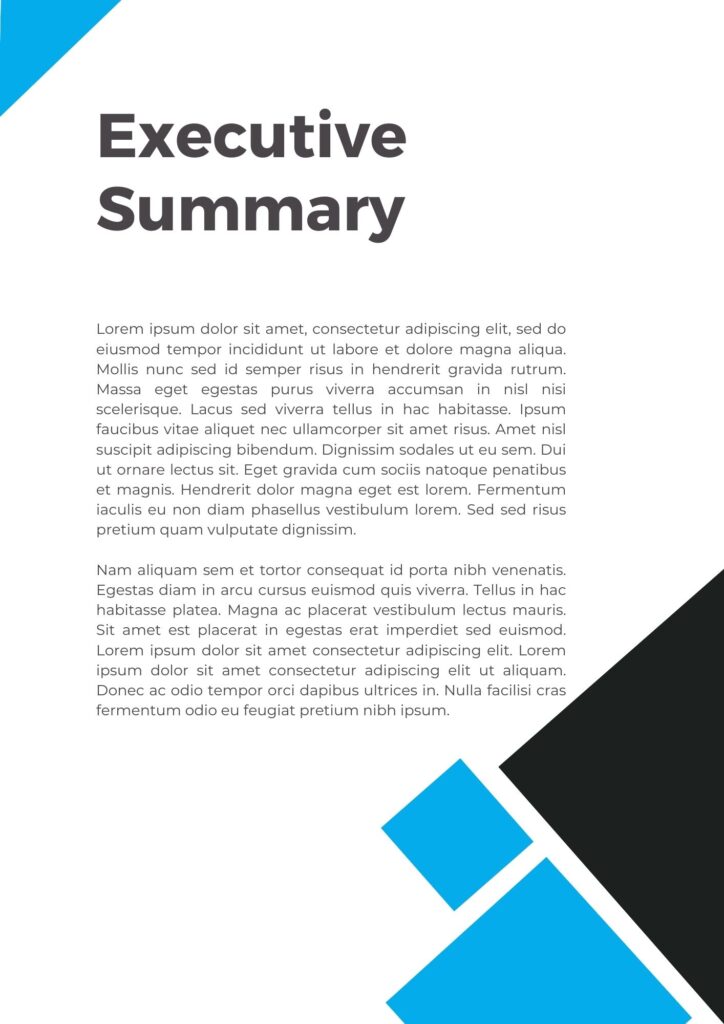
Explain the problem
One of the preferable things to do when thinking about the proposal is to describe the problem. This is one of the most important elements of the project and should be formulated properly. This is essential in order to gain the attention of the reader and to ensure that they understand the purpose of the proposal. The problem statement should be short and to the point and should be followed by a more detailed explanation of the problem and its implications. The problem should be framed in such a way that the proposed solution is clear and obvious. If the problem is not stated clearly, the reader may not be able to understand the purpose of the proposal or may not see the need for the proposed solution.

Solution of the problem
A business proposal is a document that offers a solution to a problem. It is typically used to solicit business from potential clients, but it can also be used to pitch ideas to investors. The key to writing a successful business proposal is to clearly articulate the problem that you are solving and why your solution is the best option.
Before you begin writing your proposal, you will need to do some research. This will help you to understand the problem that you are solving and the needs of your potential client. It will also allow you to craft a solution that is tailored to their specific needs. Once you have a good understanding of the problem and the client, you can begin writing your proposal.
The first step is to clearly state the problem that you are solving. Be sure to provide enough detail so that the reader understands the magnitude of the problem. Next, you will want to present your solution. Be sure to explain how your solution will work and why it is the best option.
If you take the time to write a well-crafted business proposal, you will be well on your way to securing the business of your dreams.
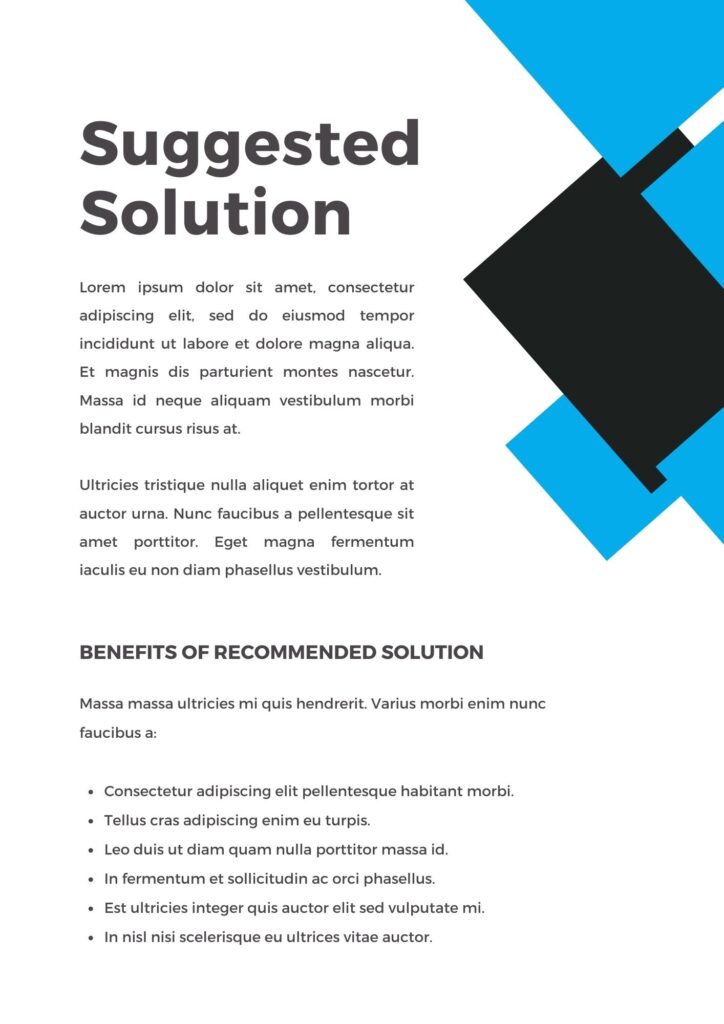
Share your skills and qualification
When writing a business proposal, it is essential to share your skills and qualifications in order to demonstrate your ability to fulfill the needs of your potential client. Here are some tips on how to effectively share your skills and qualifications in a business proposal:
1. Keep it relevant. When sharing your skills and qualifications, only include information that is relevant to the specific business proposal at hand. There is no need to list every single skill and qualification you have; instead, focus on those that are most applicable to the project at hand.
2. Be specific. When describing your skills and qualifications, be as specific as possible. This will help to paint a clearer picture for your potential client and give them a better understanding of your capabilities.
3. Use examples. Whenever possible, use concrete examples to illustrate your skills and qualifications. This will make it easier for your potential client to understand how you can be of assistance to them and see the value of working with you.
4. Highlight your successes. Be sure to highlight any successes you have achieved in the past that are relevant to the current business proposal. This will further solidify your credibility and show your potential client that you have a track record of success.
5. Keep it concise. When writing about your skills and qualifications, be sure to use clear and concise language. Avoid using jargon or technical terms that your reader may not understand. Instead, focus on explaining your skills and experience in a way that is easy to understand and relevant to the proposal at hand.
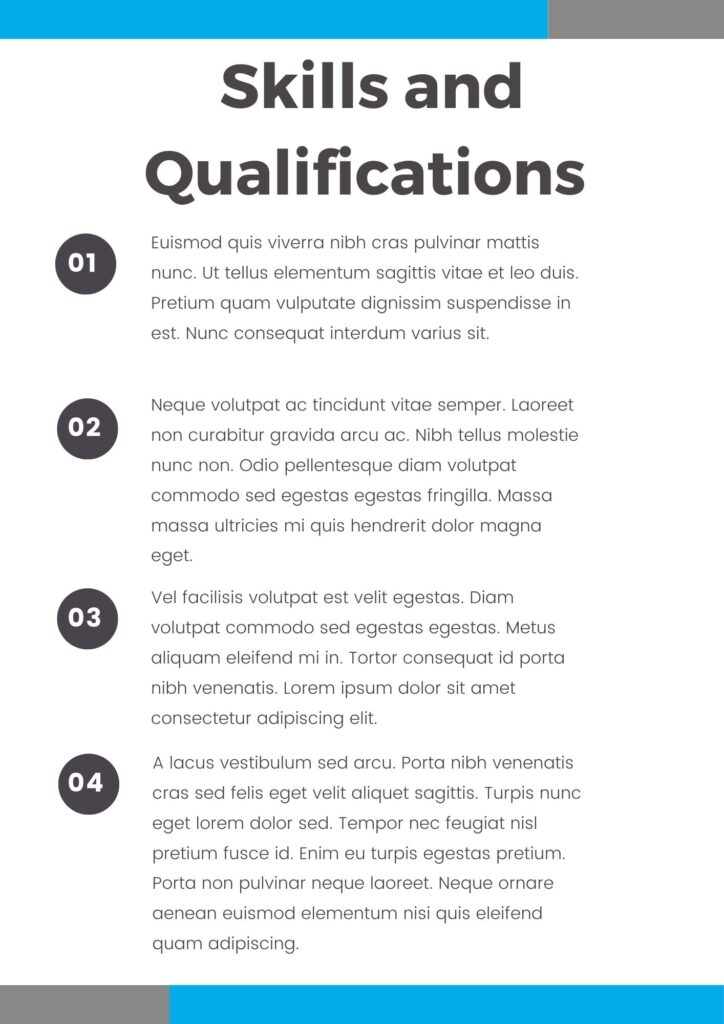
Pricing
When it comes to developing a pricing strategy for your business proposal, there are a few key things to keep in mind. First, you’ll need to have a clear understanding of your costs. This includes both your direct costs (e.g. materials, labor, etc.) and your indirect costs (e.g. overhead, marketing, etc.). Once you have a good handle on your costs, you can start to think about how you’ll price your product or service.
Make sure your pricing is competitive. You don’t like to price yourself out of the market, but you also don’t want to leave money on the table by pricing too low. A good rule of thumb is to price your product or service at a 10-20% markup from your cost. This will give you a good margin to work with while still being competitive.
Once you have your pricing strategy figured out, it’s important to communicate it clearly in your business proposal. Make sure to include all relevant pricing information upfront so that there are no surprises for the potential client. Be clear and include any relevant discounts or promotions you may be offering.

Summarize with the conclusion
After providing the above details, it’s required to simplify it into one final section. Briefly summarize the proposal. Touch on your qualifications and why you’d serve as the most suitable choice. To prompt further conversation, confirm your availability. At the end of the proposal, the destination is to have the client ready to work with you. Provide your contact details to allow them to follow up efficiently.
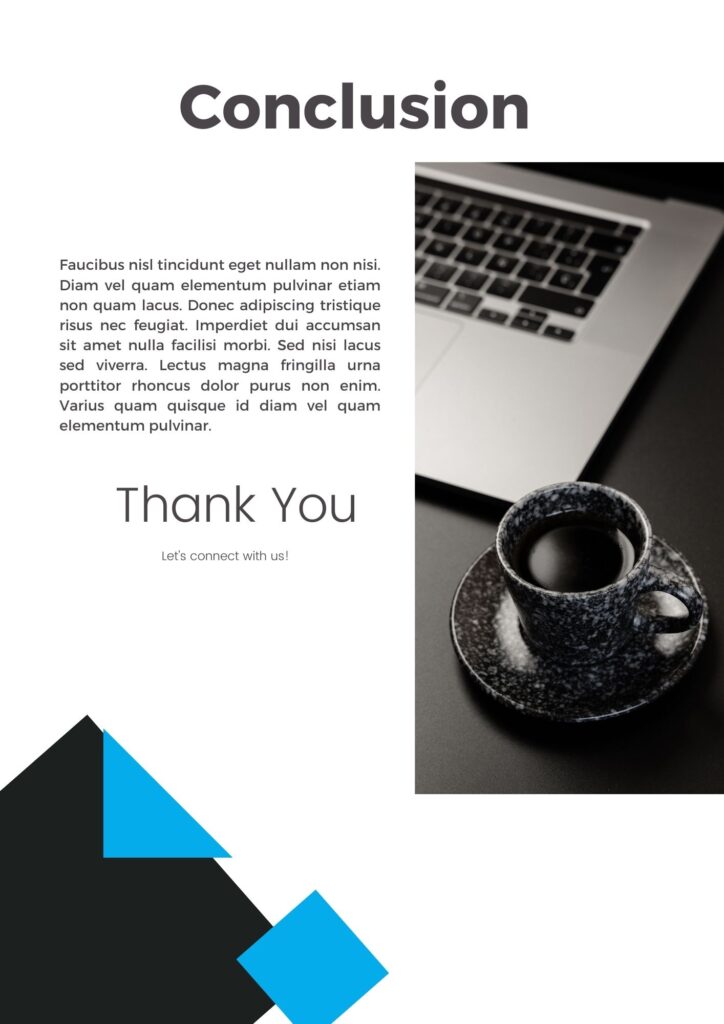
Terms and conditions
In any business proposal, it is essential to include a section on the terms and conditions of the agreement. This sets out the ground rules for both parties and ensures that everyone is clear on what is expected of them. It also helps to avoid any misunderstandings or disputes further down the line.
When writing the terms and conditions, be as clear and straightforward as possible. Avoid using jargon or legalistic language that could be confusing. It is also a good idea to use bullet points to make the information easier to digest.
Include the following information in your terms and conditions:
– A description of the services to be provided
– The timeframe for the provision of those services
– Any milestones or deliverables that need
Space for signatures
When you are writing a business proposal, there are a few things to keep in mind in order to make sure that you include a space for signatures. This is important because it allows the reader to know where they need to sign the document if they agree to the terms.

